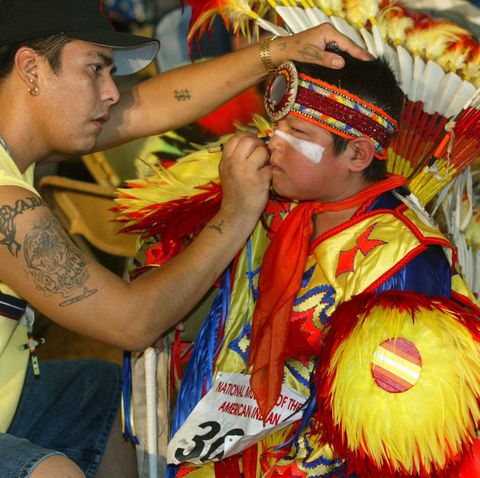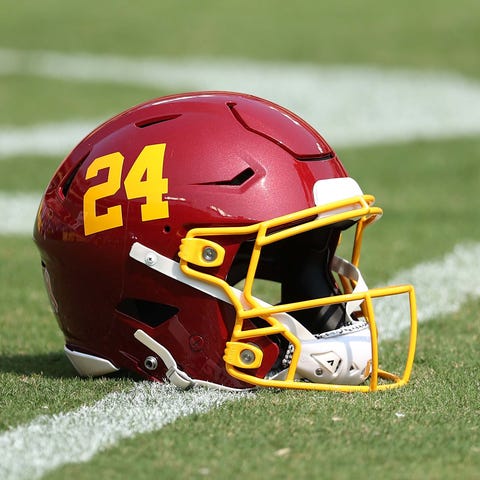There are over 9 million Native Americans and Native Alaskans living in the United States today. And with over 500 federally recognized tribes, there are hundreds of different cultures that are as unique as the people they represent. From artwork and books and literature, to cuisine and music, there is much to appreciate and learn.
While many refer to Native people as Native American, the National Museum of the American Indian notes that it’s best to use the individual tribal name, when possible. In the United States, Native American is the most common term, but many Native people prefer the terms American Indian or Indigenous American instead. When in doubt, always ask people what they prefer to called.
Every November, we celebrate Native American Heritage Month, also known as American Indian and Alaska Native Heritage Month. It’s a chance to recognize the rich and diverse cultures, traditions and stories and important contributions of Native American people, along with acknowledging the population’s hardship and struggles both throughout history and continuing today.
In case your education on Native American populations and the reasons we celebrate their heritage this month needs a refresher (or you’re looking for information to share around the Thanksgiving table), here are some fascinating facts about Native American Heritage Month and the people it’s meant to celebrate.
American Indian Day started in the early 1900s
In 1916, Red Fox James, a member of the Blackfeet Nation, rode horseback from state to gather endorsements from 24 state governments to establish a day to honor American Indians. This resulted in the very first American Indian Day. It took place the second Saturday in May 1916 in New York. Dr. Arthur C. Parker, a Seneca Indian, who was the director of the Museum of Arts and Science in Rochester, N.Y. at the time, persuaded the Boy Scouts of America to set aside a day for the “First Americans” in 1915, which they adopted for three years.
Native American Heritage Month evolved from a week
Native American Heritage Month first evolved from “American Indian Week,” which President Reagan proclaimed on the week of November 23-30, 1986. In 1990, President George H. W. Bush approved a joint resolution designating November 1990 as National American Indian Heritage Month. It was later changed to Native American Heritage month under President Barack Obama.
Indigenous People’s Day also recognizes Native heritage
President Joseph Biden was the first to recognize Indigenous People’s Day as a National Holiday, which is now held each year on October 11. For many people, it’s a counter-celebration to Columbus Day, a federal holiday which falls on the same day.
Columbus did not “discover” the Americas
When Europe “discovered” the Americas, there were already 50 million Native Americans and Indigenous peoples living there. Of that, 10 million were living in what was to become the United States. To say that Columbus discovered the “new world” disregards the rich cultures and complex societies that had already existed here for generations by the time Columbus made his way across the ocean.
Native people were forcibly relocated in the early 1800s
In 1830, President Andrew Jackson signed the Indian Removal Act, which empowered the federal government to take Native-held land east of Mississippi and forcibly remove Native people from their homes in Georgia, Alabama, North Carolina, Florida and Tennessee, sending them to “Indian territory” located in what is now Oklahoma.
The Trail of Tears marks important history
The Trail of Tears was part of a series of forced displacements of approximately 60,000 Native Americans between 1830 and 1850. During that time, nearly 4,000 people died of disease, exposure and malnutrition. To recognize and remember their history, you can walk parts of the Trail of Tears in Springfield, Missouri.
Native Americans were granted citizenship in the 1920’s
It wasn’t until 1924 that Native Americans were granted citizenship after Congress enacted the Indian Citizenship Act. While Native Americans were also given the right to vote in 1924, it took another 40 years for all 50 states to allow them voting rights.
Native populations continue to grow
In 2020, 9.1 million people in the United States identified as Native American and Alaska Native, an increase of 86.5% increase over the 2010 census. They now account for 2.9% of the population. By 2060, the Native American and Alaska Native population is expected to reach 10.1 million and account for 2.5% of the population. Alaska has the largest population of Native Americans in the United States, followed closely by Oklahoma.
Tribal lands occupy a huge swath of the U.S.
There are approximately 326 Indian land areas in the U.S. administered as federal Indian reservations, covering more than 56 million acres. Currently, there are 574 federally recognized American Indian and Alaska Native tribes and villages.
Cherokee is the largest tribal grouping
The three largest Native American tribal groupings are Cherokee, Navajo and Latin American Indian tribes. The three largest Alaskan Native groupings are Yup’ik, Inupiat, and Tlingit-Haida.
Native people have many unique languages
There are approximately 175 Indigenous languages spoken in the United States today.
Football teams are changing offensive names
In 2020, The Washington Redskins changed their name to The Washington Football team, dropping the previous moniker “Redskins,” which is a derogatory term often used for those of Native American descent. The Cleveland Indians followed suit and are now known as the Cleveland Guardians.
Navajo people were crucial during the WWII effort
During World War II, the United States government enlisted the help of skilled Native Americans, known as code talkers, who used the Navajo language to transmit top-secret information to allied forces. Much of this information was classified until 2002 when congress passed the Code Talkers Recognition Act. Overall, some tribes had as much as 70% participation in the war effort.
We owe lots of things to Native innovation
Things that we might take for granted, like rubber, corn, kayaks, modern-day farming and even mouth wash, all find their roots in Native American design.
The U.S. government helps with preserving tribal lands
National Park Services heads the Tribal Preservation Program to assist tribes preserving their historic lands and important cultural heritage so those important elements of culture aren’t lost and can be passed on to future generations.
We owe the Iroquois our Constitution
It’s not just goods that we use every day that we owe to Native innovation. Historians believe that the United States Constitution was modeled after the “The Great Law of Peace” the constitution that governed the Iroquois Confederacy. Benjamin Franklin was said to have studied it in detail as inspiration for the Constitution that we adhere to today.
Christina Montoya Fiedler is a news writer based in Los Angeles, CA; she’s a mom, wife, blogger, former publicist, lima bean hater and coffee drinker extraordinaire — but not necessarily in that order. You can follow her on Twitter @cmf2009.
This content is imported from OpenWeb. You may be able to find the same content in another format, or you may be able to find more information, at their web site.




